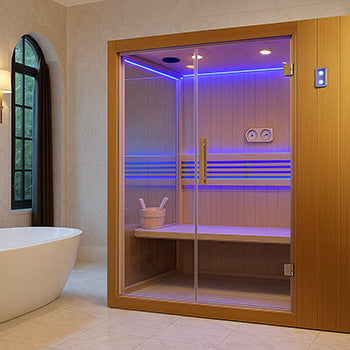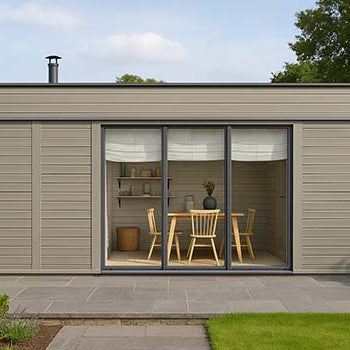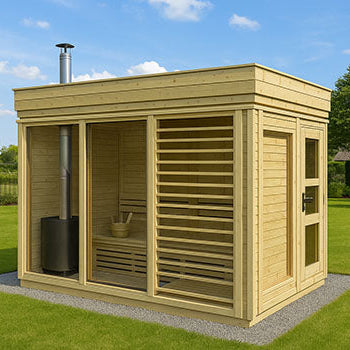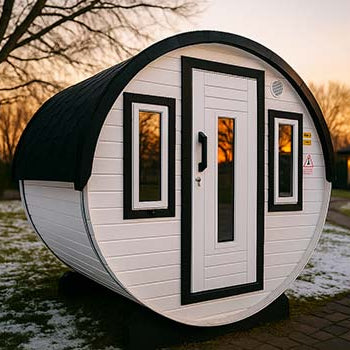Craving cosy heat at home?
Maybe you dream of an outdoor sauna tucked away in your backyards or a snug indoor sauna after a long day.
Either way, you might wonder—will your sauna roast your wallet too? Short answer: Saunas can use a fair bit of electricity, but not always.
The real story depends on the type, size, and how smart you are with usage. Curious how to keep those costs under control while still enjoying the heat? Let's dive into the steamy details.

How Much Electricity Does a Home Sauna Use?
Understanding Sauna Power Consumption (kw Ratings)
First things first—sauna heaters are the main power guzzlers.
If you've got a traditional sauna, expect your heater to need 4.5 kw to 8 kw to get things toasty.
Infrared saunas? They’re far more economical, usually sipping between 1.6 kw and 3.2 kw.
It’s like comparing an old-school oven to a modern air fryer. Both cook, but the methods (and energy needs) are worlds apart.
Key Factors: Heater Size, Sauna Dimensions, Insulation Quality
How much juice your sauna uses isn’t just about the heater itself.
Other things crank up the bill, like:
-
Heater size: Big heater, big appetite.
-
Sauna dimensions: More room means more heat to fill.
-
Insulation quality: Poor insulation is like heating a tent—most of it escapes.
Smart design and good insulation are your secret weapons for lower energy bills.
Calculating Energy Use Per Sauna Session (kWh)
The Role of Warm-Up Time and Session Length
Your sauna doesn’t instantly hit those dreamy temperatures.
The warm-up phase is when your heater works hardest, usually 30–45 minutes of peak power use.
After that, it shifts into chill mode, using less juice to hold the heat.
Think of it like boiling a kettle—heating the water takes more energy than keeping it warm.
Example: Estimating kWh for a Typical Electric Sauna Session
Got a 6 kw traditional sauna at home? Here's how a session might look:
Total session energy use: around 6 kWh.
That’s roughly the same as binge-watching Netflix on a 65-inch TV for 24 hours straight.
Example: Estimating kWh for an Infrared Sauna Session
For a 2 kw infrared sauna, the numbers look much friendlier:
Total session energy use: around 1.5 kWh.
That’s more like drying your hair with a powerful hairdryer for an hour.
Is Sauna Electricity Consumption High Compared to Other Appliances?

Comparing kWh Usage (Sauna vs. Oven, Dryer, etc.)
When you stack up sauna usage against your home’s usual suspects:
Considering Frequency of Use
Of course, if you’re using it every day like a coffee machine, the costs will pile up.
But for most people, 2–3 sauna sessions a week keep electricity costs reasonable, and still give you that spa-like feeling at home.
Differences Between Sauna Types
Traditional Electric Sauna Energy Needs
Traditional electric saunas give you that classic, sweat-dripping, steam-filled experience.
But they also top the energy charts, thanks to higher wattage heaters and those long warm-ups.
Perfect if you love intense heat, but prepare for a bigger electricity bill.
Infrared Sauna Energy Efficiency
Infrared outdoor saunas? They’re the energy-saving champions.
By heating your body directly (not the air), they warm up fast and keep costs low.
Ideal for anyone wanting that daily wellness ritual without the financial guilt trip.
Wood-Fired Saunas (Alternative Energy Source)
Prefer old-school vibes? Barrel saunas ditch electricity entirely.
They rely on firewood for heat, offering a rustic, off-grid charm.
Zero on the electricity bill, but be ready for manual fire-tending and patience.
Tips for Reducing Your Sauna's Electricity Use
-
Only preheat when needed—avoid firing it up hours before your session.
-
Upgrade insulation—keep that precious heat from escaping.
-
Use smart plugs or timers to automate shut-offs.
-
Keep your heater clean and well-maintained—a dusty heater is an inefficient one.
-
Try shorter sessions—even 10 minutes less can make a difference in your bill.
Small habits add up to big savings.
Conclusion: Putting Sauna Electricity Consumption in Perspective

So, does your sauna gobble up electricity?
It can—but it doesn’t have to.
Traditional electric models? Thirsty for power.
Infrared saunas? Much kinder to your wallet.
By knowing your sauna type and adjusting your usage habits, you can enjoy the heat without sweating over the energy bills.
And with a few smart tweaks—like timing sessions or using off-peak tariffs—you can make every sauna session feel like a warm, affordable escape.
After all, what’s the point of a relaxing sauna if you’re stressing about your energy costs?









